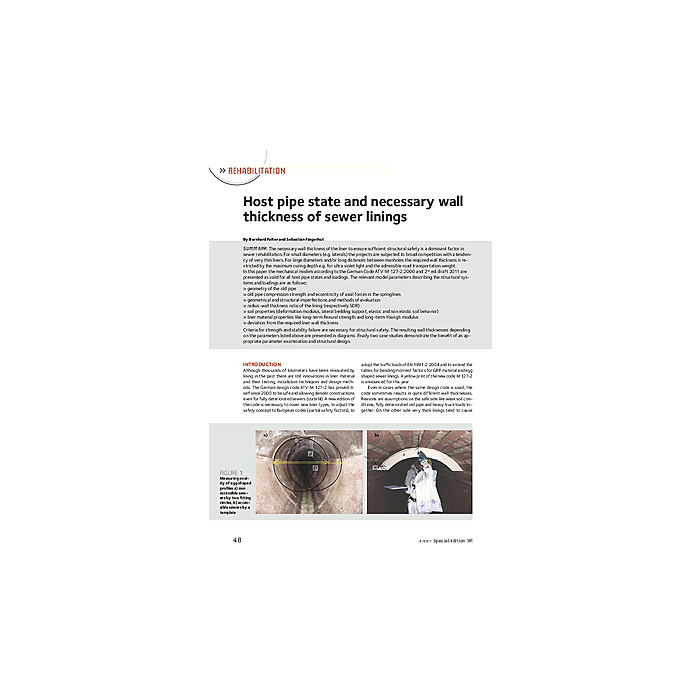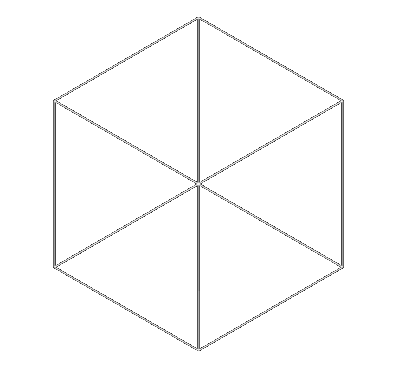Host pipe state and necessary wall thickness of sewer linings
4,90 €
Auf Lager
Artikelnummer
01252_2011_SP2_11
The necessary wall thickness of the liner to ensure sufficient structural safety is a dominant factor in sewer rehabilitation. For small diameters (e.g. laterals) the projects are subjected to broad competition with a tendency of very thin liners. For large diameters and/or long distances between manholes the required wall thickness is restricted by the maximum curing depth e.g. for ultra violet light and the admissible road transportation weight. In this paper the mechanical models according to the German Code ATV-M 127-2:2000 and 2nd ed. draft 2011 are presented as valid for all host pipe states and loadings. The relevant model parameters describing the structural systems and loadings are as follows: geometry of the old pipe, old pipe compression strength and eccentricity of axial forces in the springlines, geometrical and structural imperfections and methods of evaluation, radius-wall thickness ratio of the lining (respectively SDR), soil properties (deformation modulus, lateral bedding support, elastic and non elastic soil behavior), liner material properties like long-term flexural strength and long-term Young's modulus, deviation from the required liner wall thickness. Criteria for strength and stability failure are necessary for structural safety. The resulting wall thicknesses depending on the parameters listed above are presented in diagrams. Finally two case studies demonstrate the benefit of an appropriate parameter examination and structural design.
| Autoren | Bernhard Falter and Sebastian Fingerhut |
|---|---|
| Erscheinungsdatum | 30.09.2011 |
| Format | |
| Zeitschrift | 3R - Special 2 2011 |
| Verlag | Vulkan-Verlag GmbH |
| Sprache | English |
| Seitenzahl | 8 |
| Titel | Host pipe state and necessary wall thickness of sewer linings |
| Beschreibung | The necessary wall thickness of the liner to ensure sufficient structural safety is a dominant factor in sewer rehabilitation. For small diameters (e.g. laterals) the projects are subjected to broad competition with a tendency of very thin liners. For large diameters and/or long distances between manholes the required wall thickness is restricted by the maximum curing depth e.g. for ultra violet light and the admissible road transportation weight. In this paper the mechanical models according to the German Code ATV-M 127-2:2000 and 2nd ed. draft 2011 are presented as valid for all host pipe states and loadings. The relevant model parameters describing the structural systems and loadings are as follows: geometry of the old pipe, old pipe compression strength and eccentricity of axial forces in the springlines, geometrical and structural imperfections and methods of evaluation, radius-wall thickness ratio of the lining (respectively SDR), soil properties (deformation modulus, lateral bedding support, elastic and non elastic soil behavior), liner material properties like long-term flexural strength and long-term Young's modulus, deviation from the required liner wall thickness. Criteria for strength and stability failure are necessary for structural safety. The resulting wall thicknesses depending on the parameters listed above are presented in diagrams. Finally two case studies demonstrate the benefit of an appropriate parameter examination and structural design. |
Eigene Bewertung schreiben


